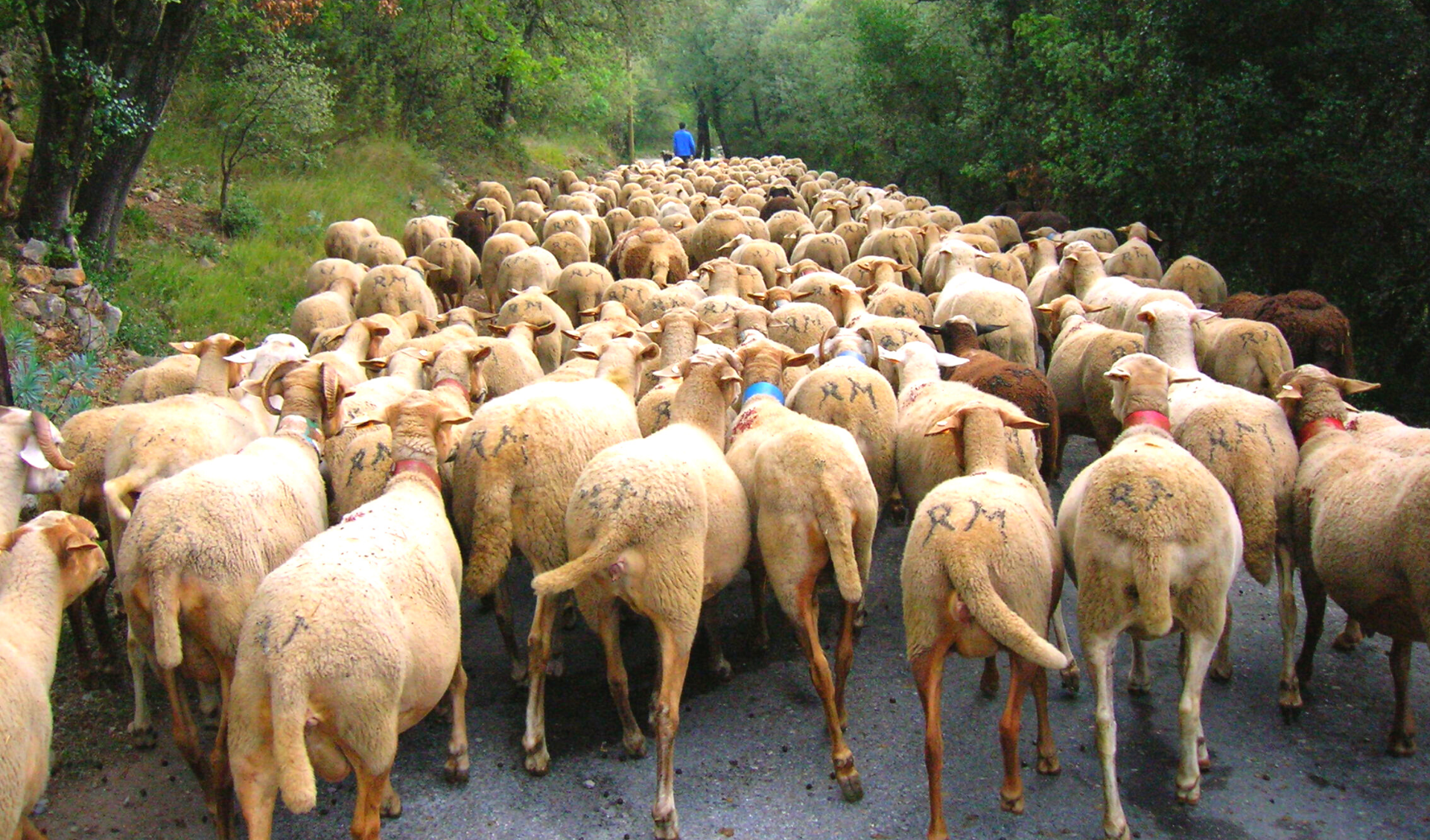Wise management of veterinary antiparasitic treatments using a One Health EcoHealth approach in Southeastern France
DOI:
https://doi.org/10.19182/remvt.36906Keywords
sheep, cattle, horses, parasitism, ecotoxicity, resistance to chemicals, disease managementAbstract
The ecotoxicity of veterinary antiparasitic treatments and the emergence of resistance to several families of antiparasitic molecules have led to the need to consider the proper use of these products in order to reduce their ecological impact while controlling sanitary and economic issues within the herd. The present study explores these notions within the framework of the support of nineteen breeders from two French departments (Gard and Hérault) engaged in a process of wise management of the parasite risk through the respect of a schedule of conditions of environmental protection, relating in particular to the preservation of threatened species such as the ocellated lizard (Timon lepidus). These farmers practice various activities as well as different types of breeding (sheep or beef cattle, Camargue cattle, dairy goats, racehorses). Semi-structured interviews were used to describe their practices and to understand how they integrated the wise management of parasite risk into their strategy. Coprologies were conducted to determine the rate of infestation of the herds by gastrointestinal endoparasites, and to recommend targeted treatments using molecules that are not ecotoxic for the environment, and/or effective alternatives, whose strategy must be adapted according to the type of farm and the species. Eighty percent of the farmers were heading toward a wise strategy without necessarily being aware of it since they rarely treated their animals and were generally concerned about applying the right treatment methods. Nevertheless, they seemed to need close support for the diagnosis, treatment timing and molecules to be used, as well as for the management of animals’ movements between plots. The study showed the crucial role of veterinary practitioners in this type of approach. However, awareness raising and training must be organized to encourage their involvement.
Downloads
References
Aumont G., Gruner L., 1989. Population evolution of the free-living stage of goat gastrointestinal nematodes on herbage under tropical conditions in Guadeloupe (French West Indies). Int. J. Parasitol., 19 (5): 539‑564
Blume R.R., Younger R.L., Aga A., Myers C.J., 1976. Effects of residues of certain anthelmintics in bovine manure on Onthophagus gazella, a non-target organism. Southwest Entomol., 1: 100-103
CVMP, 2017. Reflection paper on the authorization of veterinary medicinal products containing (potential) persistent, bioaccumulative and toxic (PBT) or very persistent and very bioaccumulative (vPvB) substances. Committee for Medicinal Products for Veterinary use, European Medicines Agency, EU
Davies I.M., Rodger G.K., 2001. A review of the use of ivermectin as a treatment for sea lice [Lepeophtheirus salmonis (Krøyer) and Caligus elongatus Nordmann] infestation in farmed Atlantic salmon (Salmo salar L.). Aquac. Res., 31 (11): 869‑883
Döpfer D., Kerssens C.M., Meijer Y.G.M., Boersema J.H., Eysker M., 2004. Shedding consistency of strongyle-type eggs in dutch boarding horses. Vet. Parasitol., 124 (3-4): 249‑258
Drudge J.H., Szanto J., Wyant Z.N., Elam G., 1964. Field studies on parasite control in sheep: comparison of thiabensazole, ruelene, and phenothiazine. Am. J. Vet. Res., 25: 1512‑1518
Gasbarre L.C., Leighton E.A., Bryant D., 1996. Reliability of a single fecal egg per gram determination as a measure of individual and herd values for trichostrongyle nematodes of cattle. Am. J. Vet. Res., 57 (2): 168‑171
Jacquiet P., Canellas A., Bonnefont M., Liénard E., Grisez C., Prévot F., Bouhsira E., et al., 2015. Evaluer le parasitisme par les strongles gastro-intestinaux dans un lot d’ovins : stratégie d’échantillonnage et intérêt de la coproscopie de mélange. Journées Nationales des GTV, Nantes, France, 119–124
Leathwick D.M., 1995. A case of moxidectin failing to control ivermectin resistant Ostertagia species in goats. Vet. Rec., 136 (17): 443‑444
Lumaret J.P., 1986. Toxicité de certains helminthicides vis-à-vis des insectes coprophages et conséquences sur la disparition des excréments de la surface du sol. Acta Oecologica Oecologia Appl., 7 (4): 313‑324
Lumaret J.P., Kadiri N., 2018. Les médicaments vétérinaires et leurs résidus : quels risques pour les organismes non ciblés et le fonctionnement des écosystèmes ? Bull. GTV 10: 93‑100
Morgan E.R., Cavill L., Curry G.E., Wood R.M., Mitchell E.S.E., 2005. Effects of aggregation and sample size on composite faecal egg counts in sheep. Vet. Parasitol., 131 (1‑2): 79‑87
O’Connor L.J., Walkden-Brown S.W., Kahn L.P., 2006. Ecology of the free-living stages of major trichostrongylid parasites of sheep. Vet. Parasitol., 142 (1‑2): 1‑15
Pautric S., 2003. Données récentes sur la résistance aux anthelminthiques des strongles gastro-intestinaux des ruminants. Thèse Doc., Ecole Nationale Vétérinaire de Toulouse, France. 95 p.
Rüegg S.R., Buttigieg S.C., Goutard F.L., Binot A., Morand S., Thys S., Keune H., 2019. Concepts and experiences in framing, integration and evaluation of One Health and EcoHealth. Frontiers Vet. Sci., 6: 55
Sangster N.C., Whitlock H.V., Russ I.G., Gunawan M., Griffin D.L., Kelly J.D., 1979. Trichostrongylus colubriformis and Ostertagia circumcincta resistant to levamisole, morantel tartrate and thiabendazole: occurrence of field strains. Res. Vet. Sci., 27 (1): 106‑110
Schneider S., Pfister K., Becher A.M., Scheuerle M.C., 2014. Strongyle infections and parasitic control strategies in German horses - a risk assessment. BMC Vet Res. 10: 262
Shaw D.J., Vercruysse J., Claerebout E., Dorny P., 1998. Gastrointestinal nematode infections of first-grazing season calves in Western Europe: associations between parasitological, physiological and physical factors. Vet. Parasitol., 75 (2‑3): 133‑151
Sibelet N., Mutel M., Arragon P., Luye M., 2013. Méthodes de l’enquête qualitative appliquée à la gestion des ressources naturelles. Cours en ligne. https://agritrop.cirad.fr/573381/ (consulté 18 déc. 2021)
Van Wyk J.A., Malan F.S., 1988. Resistance of field strains of Haemonchus contortus to ivermectin, closantel, rafoxanide and the benzimidazoles in South Africa. Vet. Rec., 123 (9): 226‑228

Downloads
-
Abstract1392
-
pdf (Français)501
Published
How to Cite
License
© I.Bouasla et al., hosted by CIRAD 2022

This work is licensed under a Creative Commons Attribution 4.0 International License.







